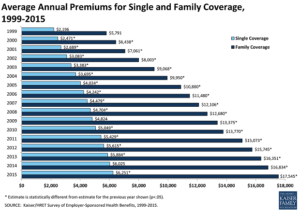Medicare for All or Single Payer – not the same thing.

The intent seems to get lost in the translation. People use these words interchangeably, but they really mean different things. There are several proposals on the table in Congress that this article does not address. The two that seem to be gaining popularity are MEDICARE FOR ALL and SINGLE PAYER.
MEDICARE is government insurance alongside private insurance.
There are premiums that are paid by the insured for BOTH the Medicare coverage and the Private Insurance coverage. Typically, there are also deductibles and copays or coinsurance that are paid by the insured as well. There is no coverage for Long-Term Care, Vision, or Dental with Medicare. However, some private insurers have added the opportunity to purchase those services at an additional premium.
SINGLE PAYER is only government insurance.
They cover anything that is MEDICALLY NECESSARY, which may include some form of Long-Term Care, Vision and/or Dental. The insured does not pay any premiums, deductibles or copays. The entire program is funded with increased taxes to the general population. The government controls all aspects of medical distribution, to include payment of claims to doctors and medical facilities as well as access to medical technology. Costs are controlled by controlling/limiting access to services.
There are advantages and disadvantages to both:
MEDICARE FOR ALL would still allow your doctor to make medical decisions based on your needs as opposed to a governmental agency regulating your care. People would still have choices regarding their private insurance portion, which would maintain some sort of competition between insurance companies to vie for your business. Increasing the number of people on Medicare would be expensive. Our current Medicare system is not financially sound – adding the entire population to it would mean a large increase in taxes to pay for it.
SINGLE PAYER would lower some administrative costs, as well as some profits. But putting the entire medical bill on the government means putting it on the taxpayers. Studies have also found that, in a Single-Payer system, research and development of new technologies and medications goes out the window because there is no funding and no incentive for that market.
How Much Are You Willing To Pay?
In either situation, the cost of these programs is coming out of your pocket. People don’t seem to understand that the government has only one source of income: YOU. When you say, “let the government pay for it,” what you are really saying is “let the people pay for it.” The people are the only source of income for the government. For them to have money to pay for something, they must raise taxes.
In California alone, it is estimated that we would need to add over $418 Billion to our current $209 Billion state budget in order to begin to pay for healthcare, with the numbers anticipated to rise from there – rapidly. The numbers nationally are mind-boggling.
Conclusion
The US currently spends 2-3 times more per capita than any other country for medical care. Then again, we are on top for research and development. People from other countries come here to be treated because they can get relatively quick access to services and technology compared to what they have in their country.
I can’t help but be reminded of the Scripture in 1 Samuel 8:19 where the people of Israel cried out, “We want a king over us. Then we will be like all the other nations…” As it turned out, being “like all the other nations” didn’t work out too well for them. We will have to see how this healthcare situation flushes out and see if history really does repeat itself.


 Insurance companies have released their proposed rate increases for 2017. As suspected, all carriers are increasing their premiums. A good portion of the increase is due to the discontinuation of a reinsurance program that was initially available to help the insurance companies offset some of the higher costs they faced now that they are insuring chronically ill people as well as all others. Without the reinsurance program, the additional costs have now been passed on to the consumer.
Insurance companies have released their proposed rate increases for 2017. As suspected, all carriers are increasing their premiums. A good portion of the increase is due to the discontinuation of a reinsurance program that was initially available to help the insurance companies offset some of the higher costs they faced now that they are insuring chronically ill people as well as all others. Without the reinsurance program, the additional costs have now been passed on to the consumer.